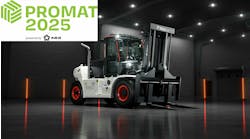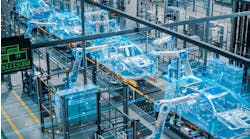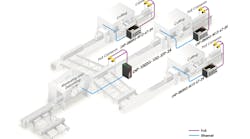5 Reasons Why Your Industrial Network Needs an Ethernet Switch
Since the ratification of the first PoE standard in 2003 by the Institute of Electronics Engineers (IEEE), Power over Ethernet (PoE) use cases have increased dramatically in industrial circles having made headway into factory automation, oil and gas processing, and utilities. IEEE 802.3bt, also known as PoE++, is the latest revision to the PoE standard.
Released in 2018, IEEE 802.3bt increases the amount of power supplied from Power Sourcing Equipment (PSEs) to Powered Devices (PD) nearly threefold by using all four pairs in the specified structured wiring plant, while significantly reducing the standby power required for PDs thanks to Short MPS. Inventive new features of IEEE 802.3bt also include Autoclass, 10G-BaseT with PoE support, Single/Dual Signature PD, and Power Class Levels.
There are two types of IEEE 802.3bt: Type 3 delivers 60 W from the PSE for up to 51 W input power at the PD while Type 4 PoE delivers 90 W from the PSE for up to 73 W input power at the PD. Both types are backward compatible with 802.3af and 802.3at.
Managed and unmanaged industrial Ethernet switches are the most common type of industrial PSE to embed IEEE 802.3bt technology.
Below are five reasons to upgrade your existing Ethernet switches to models with IEEE 802.3bt.
1. More Power Means More Opportunities
Unlike previous generations, IEEE 802.3bt has the muscle to support PTZ security cameras, sensors, level measurement devices, PLCs, 802.11ac and 802.11ax wireless access points, controllers, actuators, and LED lighting, among other high-power PDs found on factory floors. Besides supplying more power, an 802.3bt switch plays its traditional role of creating reliable networks for connected devices to communicate and exchange data.
2. Improved Network Reliability
Gartner estimates that one minute of downtime for an industrial network cost $5,600 (USD) on average or approximately $300,000 an hour. An industrial switch with 802.3bt will help to improve the reliability and uptime of your industrial network by providing redundant connections and failover mechanisms.
3. Real-Time Control and Communication
IEEE 802.3bt expands support for Ethernet data speeds up to 10 Gigabits per second. This is significant because the growing majority of operations technology (OT) applications require real-time control and communication to cut costs and push efficiency. Consider this example: instructions are sent from a presence sensor to a robotic arm when it detects a part is ready to be picked up. Next, the arm must precisely place the part onto a moving assembly belt. Here, time-critical information must reach all machines without latency. An industrial IEEE 802.3bt switch is optimized so that OT networks remain highly responsive and reliable.
4. Flexible Installation for Applications
Like all versions of PoE, IEEE 802.3bt is standards-based. This means interoperability across vendors of multiple PDs from a single industrial Ethernet switch. It also means that third-party non-PoE PDs will be detected and therefore not damaged by power transmitted on the CAT cable by the industrial switch. Many industrial switches with IEEE 802.3bt also enable the configuration of network topologies, such as ring, mesh, and others. Plus, they’ll support RSTP/STP, IGMP, and VLANs.
Finally, backward compatibility is not sacrificed for IEEE 802.3bt’s increased wattage. Ethernet switches equipped with IEEE 802.3bt will work with existing PD types standardized in IEEE 802.3af and IEEE 802.3at.
5. Industrial Internet of Things (IIoT)
IIoT technology is becoming increasingly sophisticated and more power-hungry. Until IEEE 802.3bt was introduced, the most power that IIoT networks have been able to transmit on a single port has been 60W. IEEE 802.3bt takes a big step forward with 90 W. Safe delivery of 90 W over one cable enables the speedy implementation of a host of IIoT technologies.
Antaira industrial PoE switches with IEEE 802.3bt give you the freedom to design your plant’s layout exactly as you want. IEEE 802.3bt means power lines do not have to be run, and PoE-enabled devices can be installed in previously inaccessible places. Plus, more devices can be run by a single Antaira Ethernet device transmitting both power and high-speed data.
Like all Antaira network solutions, Antaira’s industrial IEEE 802.3bt switches are ruggedly designed for industrial environments subject to wide temperature fluctuations, heavy vibration, shock, and EMI.












